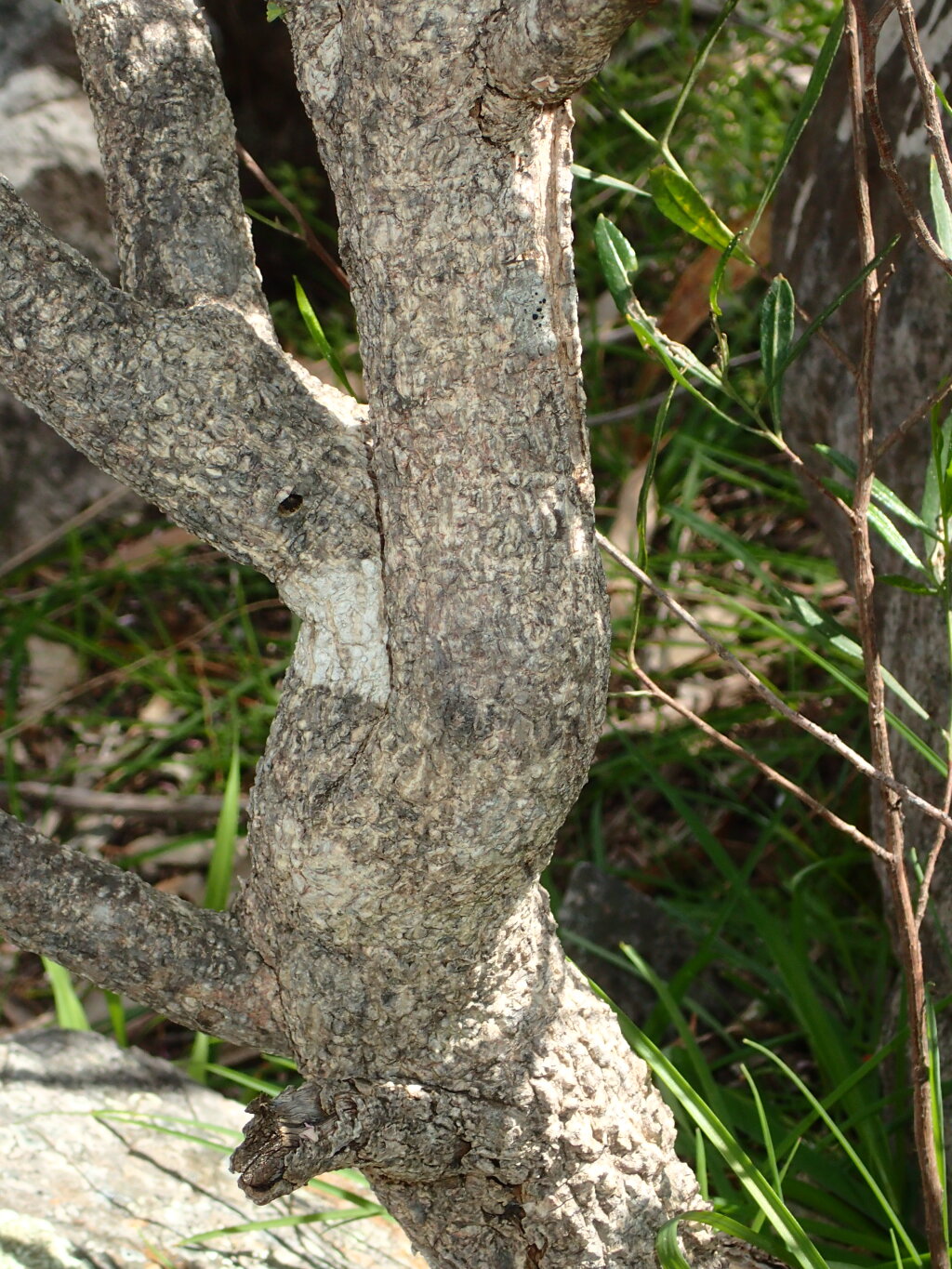Philotheca
Shrubs, subshrubs or small trees; glabrous or with an indumentum of minute simple hairs. Branchlets prominently to weakly glandular. Leaves alternate, sessile or shortly petiolate, simple. Inflorescences cymose, axillary or terminal, 1-8(-many, not in Victoria)-flowered. Flowers 5-merous or rarely 4-merous (P. virgata); sepals free, glabrous or pubescent; petals imbricate or, rarely, valvate, free (in Victoria), hairy or glabrous, deciduous or persisting in fruit; stamens twice as many as petals, filaments free above (rarely fused near base), erect or pyramidally arranged and incurved over the ovary, usually hairy, becoming recurved at the apex at anthesis, anthers usually with a prominent glabrous apiculum, eglandular or glandular at apex; disc prominent, narrow; ovary glabrous or hairy, carpels 5 (rarely 4), shortly united at the base but otherwise free (in P. trachyphylla united to near the apex by a peripheral membrane). Fruit of up to 5 follicles, mostly beaked at apex; seeds released explosively with elastic endocarp.
About 53 species, all endemic to Australia.
Most species of Philotheca were previously placed in Eriostemon which has been shown, on genetic and morphological grounds, to be polyphyletic. Eriostemon is now restricted to 2 species endemic in New South Wales and Queensland.
 Spinning
Spinning


